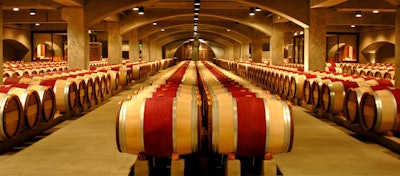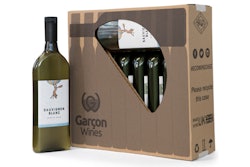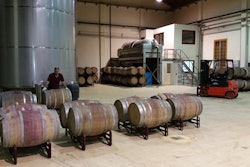
Warehousing and distribution for the wine & spirits industries is more than just moving, storing and distributing products; it requires tight operational tolerances to ensure safe and accurate handling, efficient inventory management, traceability and other compliance issues. We can take some of the ideas set forth by grocery stores to achieve efficiency and profitability.
For decades successful supermarkets have implemented scientific principles of psychology to increase retail sales and margins. Retail floor plans and shelf layouts are designed to maximize the amount of consumer time and travel in the store. Strategic product placement helps entice shoppers into purchasing additional items, while an inviting retail environment increases consumer confidence and satisfaction.
While the goals of wine & spirits logistics may be different, many of them are still the same – and the results of maximizing sales, optimized inventory turnover and streamlined efficiencies still apply.
1) Keep best sellers within easy reach.
In the warehouse, it is practical to store high-volume, high-velocity items in close proximity to picking and shipping. Proper product placement and slotting increases order fulfillment speed and accuracy, decreases picking and travel time, and helps avoid congestion. Use historical sales data and demand forecasts to determine which products should be slotted where, and use appropriate picking technologies to support your strategies.
Speaking of inventory management – one story about the lack of inventory control made the news in mid-October when it was suspected that an “insider” took 65 cases of high-dollar, 20-year old bourbon, and a few cases of less-expensive, 13-year-old rye whiskey from a distillery in Kentucky. The retail value of the 200-plus bottles is roughly $26,000, although on the black market, the rare and prized spirits would sell for much more.
The product had been bottled, labeled and packed by case on pallets. The pallets were stored in a secure location behind two sets of locked doors. About 50 employees had access to the stored product.
To those of us in the distribution industry, the heartbreaking thing about the heist is that management has no way to find out when the bottles were taken. The stolen cases were taken from the back of pallets, so nothing seemed amiss at a glance. By the time the shortage was discovered, there were no tracks to follow. Investigators believe the cases were removed a few at a time over at least a two-month period.
In early December, law enforcement officials offered a $10,000 reward for tips, but still no arrests have been made. Everyone knows how important it is to count and account for your inventory. But too many companies count just once or twice a year. Occasional inventory counts don’t provide a timely way to identify inaccuracies, discrepancies, shrinkage or other issues so that they can be corrected before losses mount. Enhanced security systems also play an important role in keeping and “eye” on one’s inventory.
2) Movement matters
Just as retailers study consumer pathways and behaviors to create effective store layouts, DC managers need to continually track employee activity and efficiency in order to determine how and where productivity can be increased. Automated monitoring and evaluation systems can yield superb insights that yield measurable results.
For picking operations, using pick-to-voice systems can speed movement as workers are hands free, compared to holding a barcode reader or RFID device, allowing them to pick much faster. Voice picking systems also reduces fatigue, improve productivity and enhance safety.
Pickers wear a small headset/microphone combination that attach to a small control unit that’s usually worn on the belt. The picker receives instruction through the headset via voice command; the picker responds by confirming the action taken, asking the command to be repeated, or requesting clarification. The immediate action-and-feedback cycle produces highly accurate results much faster than methods that require the picker to look from one task to another, scan items, or document exceptions. With both hands and eyes freed up, workers can move quickly from one location to another and select items more accurately and efficiently.
Because voice-picking systems communicate directly with individual pickers, they have become remarkably sophisticated. Systems can be set up to use different languages or dialects to accommodate a range of workers; at the same time, voice recognition software learns individual speech patterns and accents quickly. The result is reduced training time and clear communications in both directions. For one DMW&H Systems’ customer, each picker can exceed 600 bottles per hour using voice-picking technology.
3) Look outside your own operation
Retailers regularly shop the competition, borrow ideas from other sectors, and communicate extensively across locations and divisions. Some DCs operate independently, without enough interaction among divisions. An experienced wholesaler or 3PL provider can often make introductions and share connections to establish mutually beneficial relationships with an eye to putting best practices into play.
4) Embrace new technologies
When was the last time you saw a supermarket checkout lane with a manual cash register? Just as scanners, conveyors and online payment systems have transformed the retail checkout experience, DC automation technologies are vital for a warehouse that’s effective, efficient, and accurate; providing excellent customer service.
One DMW&H Systems’ customer deployed state-of-the-industry conveyors and sortation equipment, including zero-pressure accumulation conveyor and a sliding shoe sorter with “soft touch” diverts to meet fulfillment rates, plus spiral conveyors were used to save space. Another client uses an AS/RS that manages a thousand of the fast-moving SKUs while replenishing the pick locations which are located in two five-level, full-case pick modules.
5) Plan ahead
Contingency planning is a vital part of the any business. Many distributors have learned strategies to cope with natural disasters, unexpected weather events, fluctuating demand and other possibilities in order not to be caught off guard. Empty store shelves are an uncommon occurrence, which is why it makes the news on those rare occasions when it does happen. In the DC, pre-planning gives you the opportunity to think through and test options so you can build a realistic strategy for meeting unexpected demand instead of having to scramble to recover under pressure.
6) Add value
Grocers are continually adding value to customer relationships – offering prepared foods, home delivery, pharmacy services and other nontraditional services. A focus on meeting customer needs builds loyalty and often increases revenue as well. What value-added services could you provide in the wine and spirits industry? Are your drivers trained to facilitate customer interactions and needs? To assist with in-store merchandising? Do you ask customers what types of value-added services they would like to see?
In a nutshell, the successful wine & spirits DC must work hard to gather and analyze operational metrics and balance those findings with the need to also supply outstanding customer service across the industry. There’s no single solution – each operation has to develop its own recipe, and many have.


















